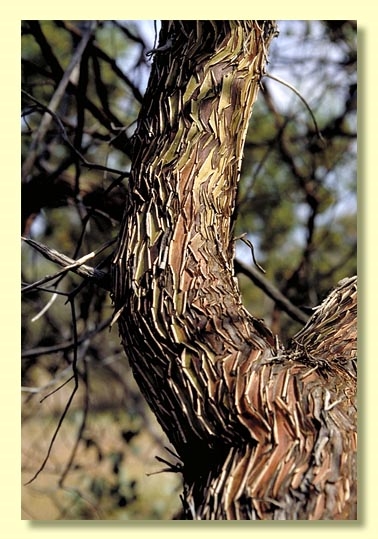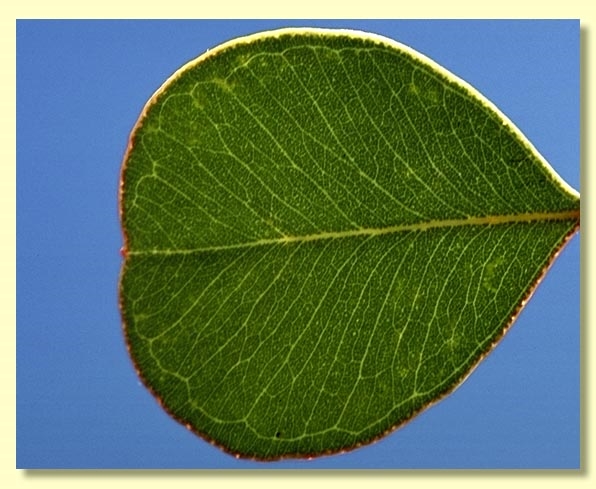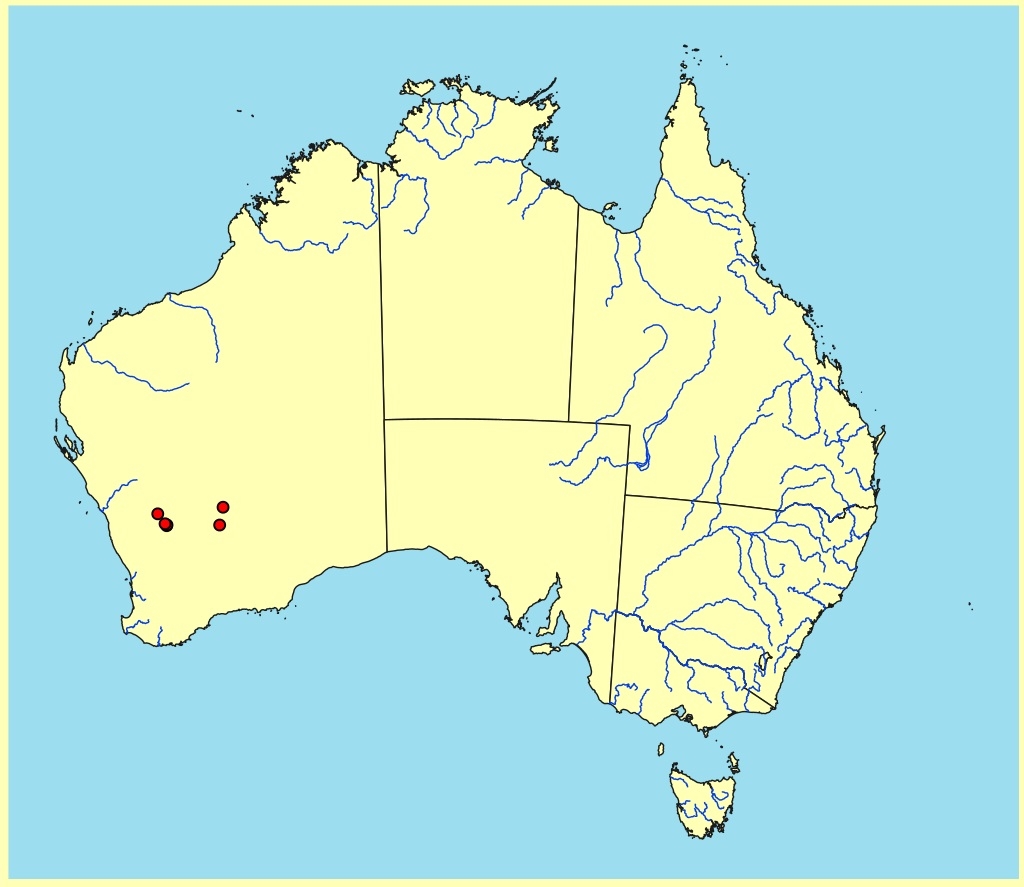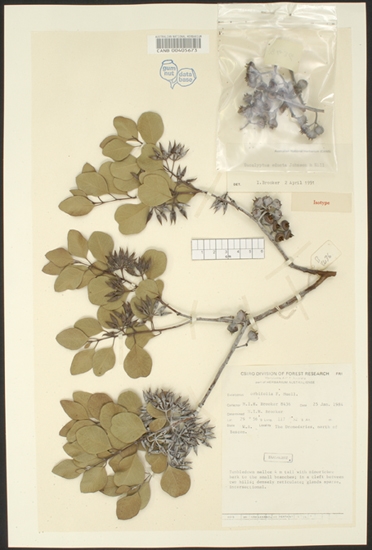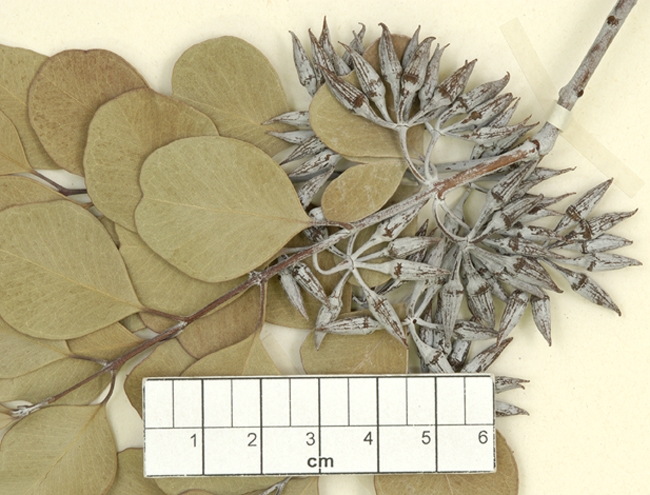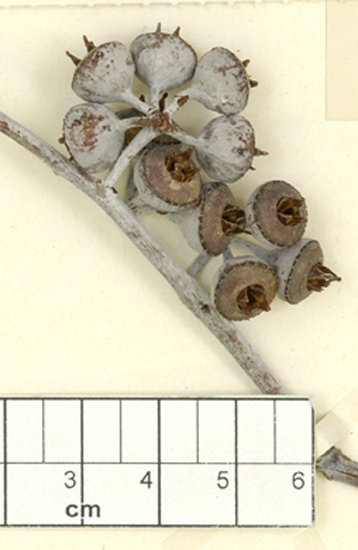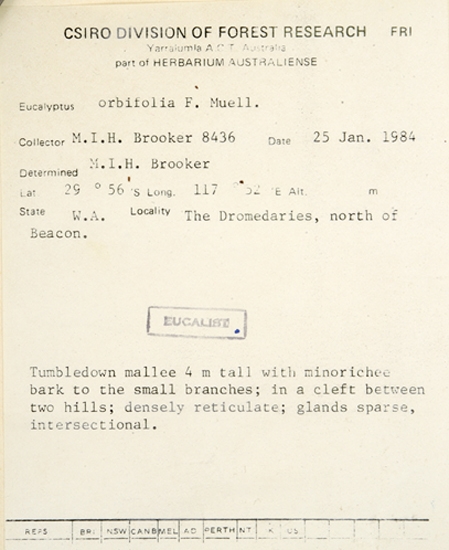Eucalyptus | Symphyomyrtus | Bisectae | Destitutae | Curviptera | Orbifoliae
Euclid - Online edition
Eucalyptus educta
Straggly mallee to 4 m tall. Forming a lignotuber.
Bark minnirichi throughout, reddish brown.
Branchlets glaucous; lacking oil glands in the pith.
Juvenile growth (coppice or field seedlings to 50 cm): not seen; epicormic growth on lower trunks is like adult foliage.
Adult leaves opposite, sub-opposite or becoming alternate, petioles 0.5–1 cm long; blade orbicular to broadly elliptical to obovate, 2.5–3.5 cm long, 2–3 cm wide, base tapering to petiole, apex rounded and sometimes apiculate, or emarginate, concolorous, dull, grey-green rarely slightly glaucous, side-veins greater than 45° to midrib, reticulation dense, intramarginal vein present, oil glands few, intersectional.
Inflorescences axillary unbranched, peduncles 1–1.5 cm long, buds 7 per umbel, pedicels 0.5–0.8 cm long. Mature buds ovoid (1.3–1.5 cm long, 0.3–0.6 cm wide), glaucous, scar present, operculum conical and up to 3 times the length of the hypanthium (0.9–1.2 cm long), stamens erect, anthers oblong, versatile, dehiscing by lateral slits, style long and usually conspicuously twisted apically, stigma blunt, locules (3)4, the placentae each with 6 vertical ovule rows. Flowers creamy white to pale yellow.
Fruit pedicellate (pedicels 0.4–0.5 cm long), shallowly and broadly obconical, 0.5–0.6 cm long, 0.8–1.1 cm wide, usually glaucous, disc level to slightly raised and convex, valves (3)4, strongly exserted and surmounted by remnant parts of the style.
Seeds brown, 1–1.7 mm long, cuboid with rounded corners or ovoid, the dorsal surface shallowly reticulate, hilum more or less terminal.
Cultivated seedlings (measured at node 10): cotyledons Y-shaped (bisected); stems rounded in cross-section, glaucous; leaves always shortly petiolate, opposite for ca 7 nodes then sub-opposite, never becoming consistently alternate, orbicular to wider than long, 1.5–3 cm long, 1.5–3.5 cm wide, dull, greyish green or slightly glaucous.
Flowering has been recorded in March and April.
A mallee endemic to Western Australia, scattered in arid country between Paynes Find, Beacon and east almost to the Kalgoorlie to Menzies road. It is found on slopes, declivities and at base of granite rocks but also on stony rises and ironstone low ridges. E. educta has minnirichi bark, glaucous branchlets, small thick-textured grey-green crown leaves, glaucous buds with long conical opercula, and glaucous fruit with prominent valves and disc.
Eucalyptus educta belongs in Eucalyptus subgenus Symphyomyrtus section Bisectae subsection Destitutae because buds have two opercula, cotyledons are Y-shaped and branchlets lack oil glands in the pith. Within this subsection E. educta is in series Curviptera, one of about 30 closely related species and subspecies which are further characterised by having large buds in umbels of one, three or seven, staminal filaments erect or oblique (rarely inflexed) in bud, and large fruit usually with an ascending disc and exserted valves.
Within the series Curviptera this species is most closely related to E. crucis, E. ewartiana, E. orbifolia and E. websteriana, which form a subgroup, subseries Orbifoliae. All have minnirichi bark, buds in umbels of three or seven (rarely 11). All have seed that are angularly ovoid though scarcely ridged. E. websteriana, E. orbifolia and E. educta differ from the other species in crown leaves – they are opposite to alternate, petiolate and obovate to obcordate. E. educta differs in having an operculum that is conical and much longer than the hypanthium, stamens that are erect not oblique in bud, and a style that is hooked or prominently twisted apically, not straight. The style feature can be seen clearly in immature fruit. Glaucescence is most pronounced in E. orbifolia and less so in E. educta.


